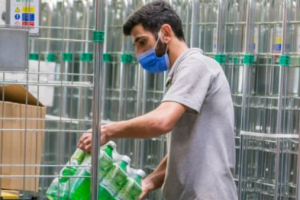Change of heart over Royce Institute location

THE former BBC site on Oxford Road at the heart of Manchester’s ‘knowledge corridor’ will not be the home of the £235m Sir Henry Royce Institute for materials research.
This is according to report due to go before Manchester City Council’s executive next week.
In April, developer Bruntwood put forward a masterplan for the strategically-important 10-acre to the council, which included 400,000 sq ft institute for materials research and innovation, alongside 1.2 million sq ft of offices and research space, 100,000 st ft of residential space, six residential blocks, a 1,000 space car part and two new public squares.
Instead the new facility, which was announced by Chancellor George Osborne in December last year, is set to be ocated on land owned by the University of Manchester and closer to the National Graphene Institute and the university’s new engineering development.
The council report says that since the announcement of the Royce, the University has been “developing and evolving the concept” of the Institute.
It states: “While locating the Royce Institute on the BBC site was initially
felt to provide an opportunity for the facility to be more centrally located
among the research cluster, further analysis and a better understanding of the
Institute’s functions suggests that it would deliver the greatest benefit, optimal operational performance and enhance academic collaboration by being more closely located to the existing National Graphene Institute and the new Engineering development. Its size and layout reinforces this conclusion.
“The UoM is able to accommodate the Royce Institute on its own estate, close
to both of these facilities and also in close proximity to the Graphene
Engineering Innovation Centre (GEIC), proposed for the North Campus.”
The report says that the alternative location for the Institute presents “a major opportunity for the University and the city’s wider economic development in the field of advanced materials,” and also an “immense opportunity” for the former BBC site.
It adds: “To underpin its potential, Bruntwood propose that the opportunity to secure a science based use should be left open for the time being and this view is supported by the University and council officers. Given the dynamics of themarket and the almost constant evolution and development of the Universities activities, this flexibility would enable the corridor to embrace new opportunities as they emerge.”








